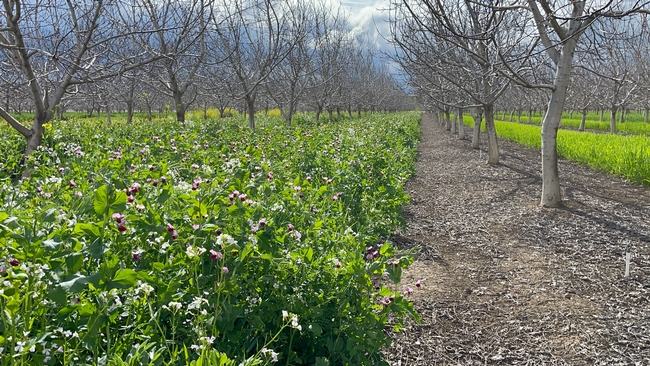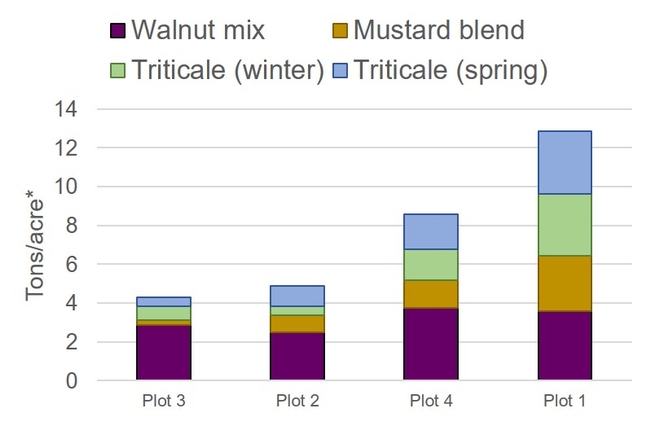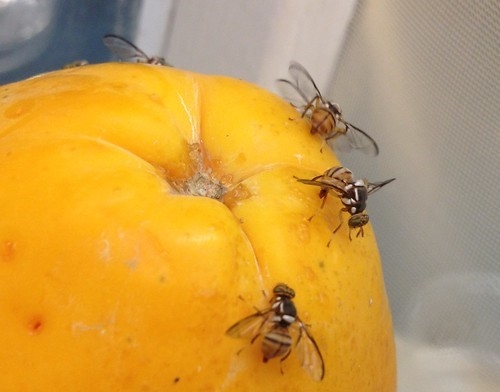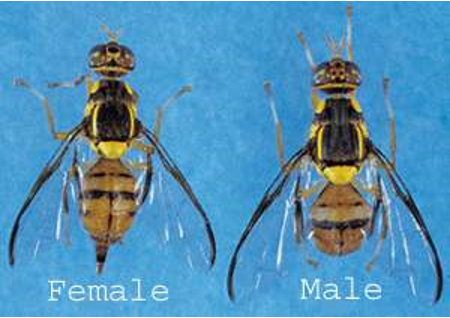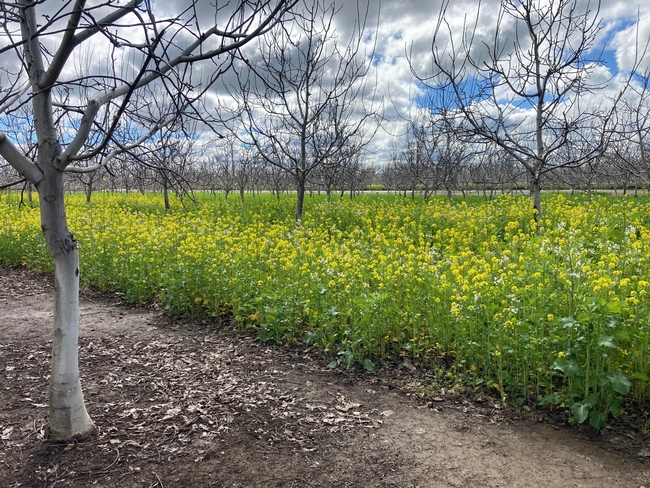
Autumn is in the air, and while it is still high season for harvest for many crops, shorter days and cooler temperatures inevitably bring to mind that winter prep tasks are not far off. And while the winter is the off-season for most crops in our region, it is definitely the on-season for cover crops. This is because, in California where irrigation water is a premium resource, we typically rely on winter rains to water cover crops. While it is ideal to make plans in advance and get the seed order in ahead of the fall rush, there is still time to think about getting a cover crop in before winter storms settle in.
What are cover crops and what are their benefits?
Cover crops include a wide range of herbaceous plants grown with the primary goal of producing biomass for the soil. They offer many opportunities to address specific soil concerns, in addition to improving and maintaining soil health, in general.
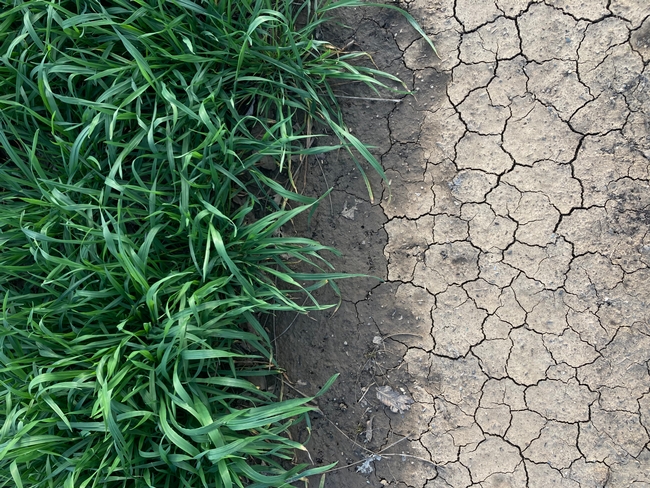
Cover crops can:
- Improve soil physical & biological functions
- Improve water infiltration
- Contribute and retain soil nitrogen
- Allow machinery earlier access to wet fields
- Suppress weeds
- Support pollinators & other beneficial insects
Water infiltration is one of the main issues that motivate growers to plant cover crops in California, as roots open new channels and feed underground life. This is especially helpful in orchards and vineyards where soil compaction is especially difficult to remedy. Cover crops can also contribute significantly to nutrient management, both in the use of nitrogen-fixing legume species, or by just foraging left-over nitrogen at the end of the season and keeping it from leaching out of the soil profile. The organic matter that cover crops contribute also improves soil structure and how much water and nutrients it can hold.
Cover crop types and their applications
Cover crops are often broadly grouped by plant types that differ in their primary benefits. For example, grasses generally produce dense stands with extensive, fine, fibrous roots that improve water infiltration and are excellent at mining nitrogen. They are more amenable to driving on at earlier growth stages, and are usually easy to mow. Legumes can actually add nitrogen to the soil through their symbiosis with bacteria that sequester nitrogen from the atmosphere. Because of their high nitrogen content, their biomass generally decomposes more quickly than other cover crops, which can mean a quicker turnaround in a tight planting schedule. Plants in the mustard family produce deep, thick tap roots that open up the soil, and their flowers are favorites of pollinators and other beneficial insects, but if allowed to mature, their sturdy stems may take more work to chop and more time to decompose.
These different types can be used singly or in combinations. There are mixes that incorporate all three types to "hedge bets" against conditions that might disfavor one or another type, and to take advantage of the way that they can complement one another. Many seed companies have developed their own mixes with characteristics to serve specific needs and circumstances.
2022 Orchard Cover Crop Trial
Cover cropping can be as much art as science, if not more so, which means that experience and experiment are essential. To this end, in the fall of 2022, I teamed up with Tom Johnson of Kamprath Seed and a local walnut grower to test out some different cover crops with the hope to improve water infiltration in the orchard. Our trial included a winter triticale, a hybrid grass known for abundant root production without too much aboveground growth, a mustard “pollinator blend” that included a mix of mustard and radish types, and Kamprath Seed's walnut mix, which includes a full complement of grasses, mustards, and legumes. The grower added a forage, spring triticale, which has more of an upright growth, adding a second triticale type for comparison. It turned out to be a lucky year to have cover crops in the orchard, as it was an exceptionally wet winter, putting many fields feet underwater, especially where infiltration was poor. Overall, all of the cover crop types established rather well in most of the planted rows, though there was a great deal of variation throughout the orchard, showing how conditions can affect the crop. Nevertheless, the walnut mix (with legumes, mustard, and grasses) consistently produced the highest total biomass, even in places where the mustard mix and straight triticale came up somewhat thin (see chart below). This highlights the advantages of diversity, but as Tom pointed out during our spring field day for the trial, results may vary considerably from year to year, and each type or blend will have advantages and disadvantages. You can learn more about the trial and the qualities of different cover crops in a video version of the field day on my YouTube channel.
Getting started with cover crops
If you are inspired, I think it is with good reason. Cover crops are tools with great potential and they really engage farming know-how and problem-solving muscles. As in all new things, it's always best to start small and experiment. There are many resources available for learning the basics or refining your existing knowledge about how to effectively employ and benefit from cover crops. In 2021, UCCE and the Resource Conservation District in Contra Costa County together developed Cover Cropping Opportunities in Specialty Crops, a series of recorded webinars and virtual site visits that explore the world of cover cropping from many different angles. These videos offer a wealth of information, instruction, and demonstrations from experienced practitioners and experts.
In addition, below are listed some other excellent UC resources on cover cropping:
Cover Cropping Opportunities in Specialty Crops video series by Contra Costa County Resource Conservation District and UC Cooperative Extension
Grasses, Mustards, & Legumes: An Orchard Cover Crop Field Day video featuring Tom Johnson of Kamprath Seed by UCCE Specialty Crops in the East Bay/Mt Diablo Region
Covercrops for California Agriculture UC ANR Publication Number 21471
Cover Cropping for Vegetable Production UC ANR Publication Number 3517
Cover Cropping in Vineyards: A Grower's Handbook UC ANR Publication Number 3338
Cover Crop Management in Annual Farming Systems Blog Post by UCCE Agronomy Advisor, Sarah Light
Cover Crop Best Management Practices published by the Almond Board of California in collaboration with UC Davis and UC ANR.
Cover Crops for Walnut Orchards UC ANR Publication Number 21627e
Cover Crop Selection tool by UC ANR SAREP

